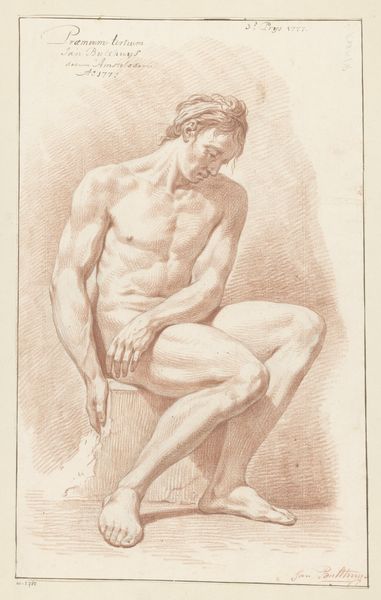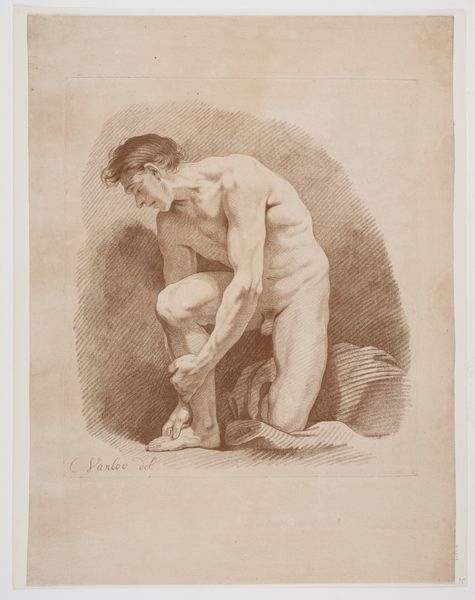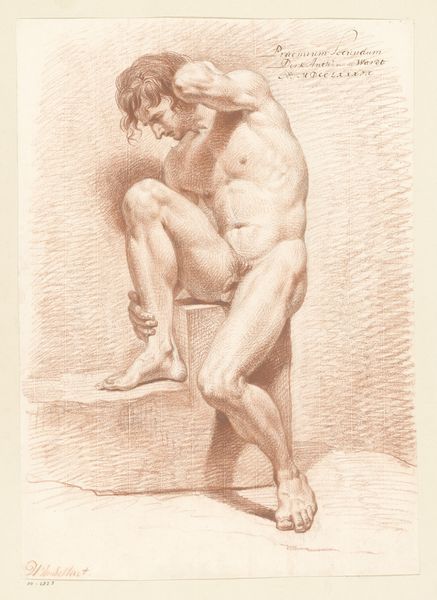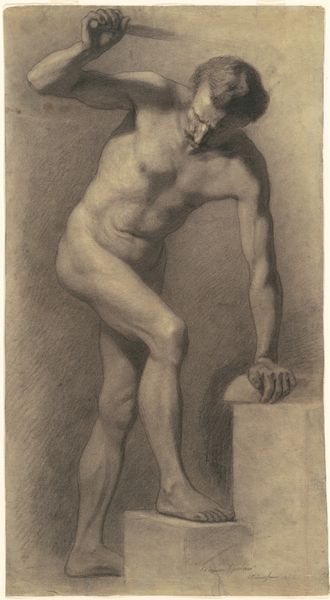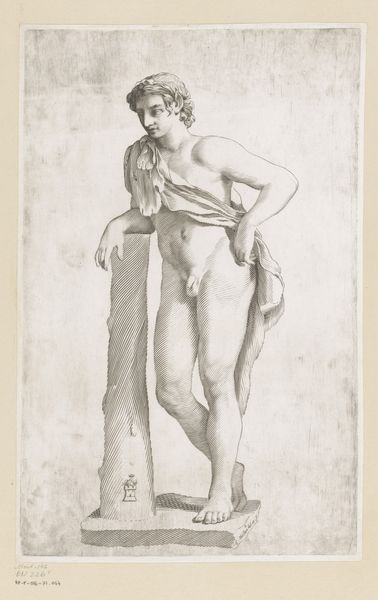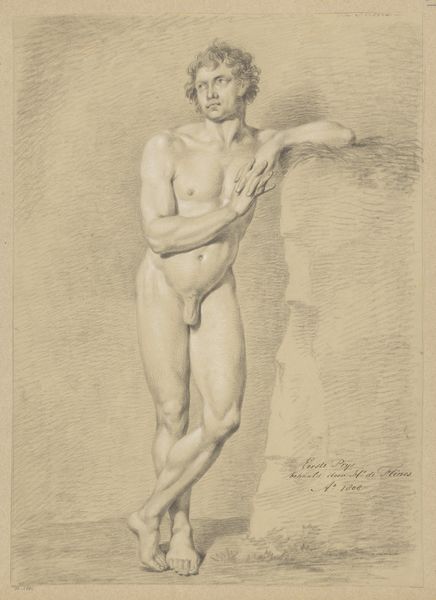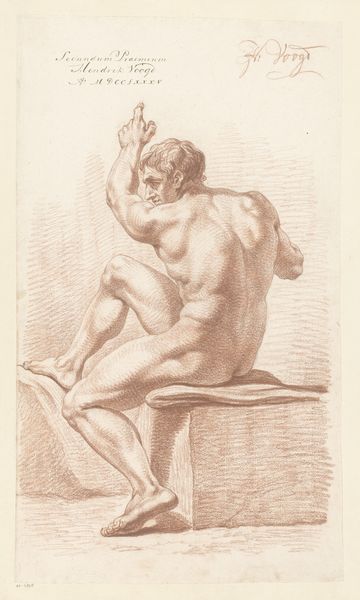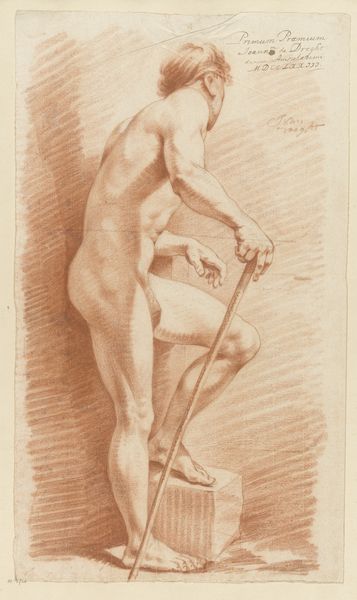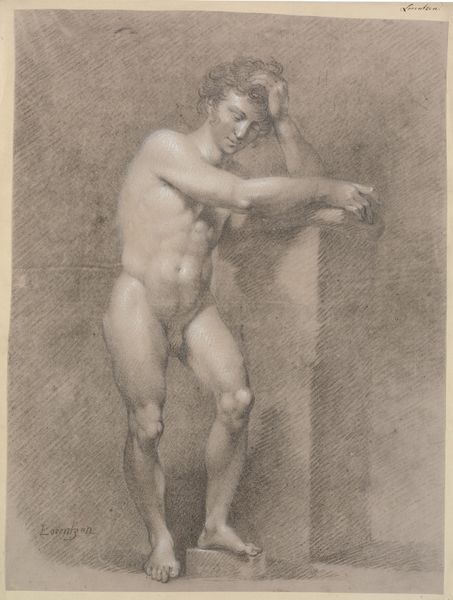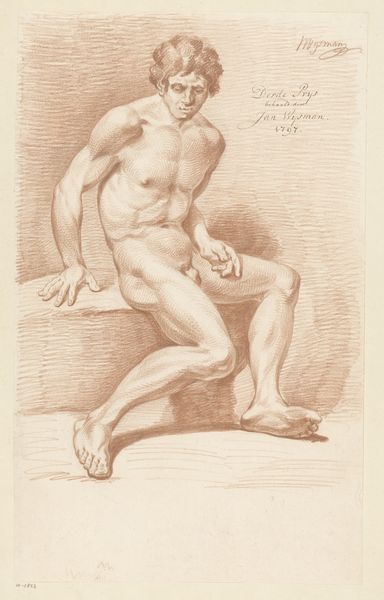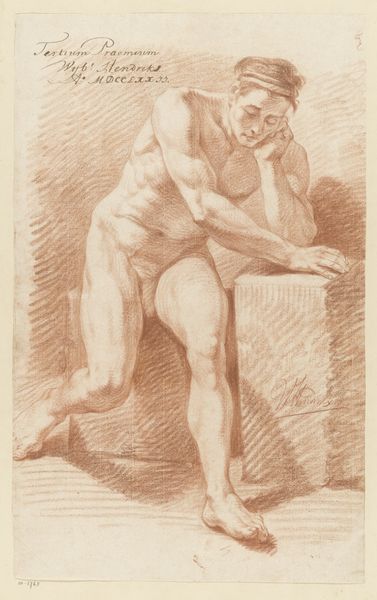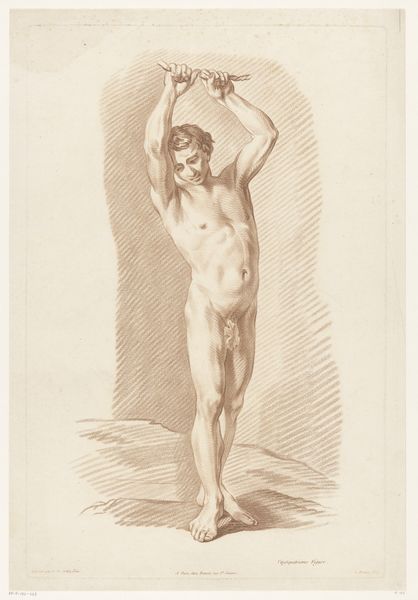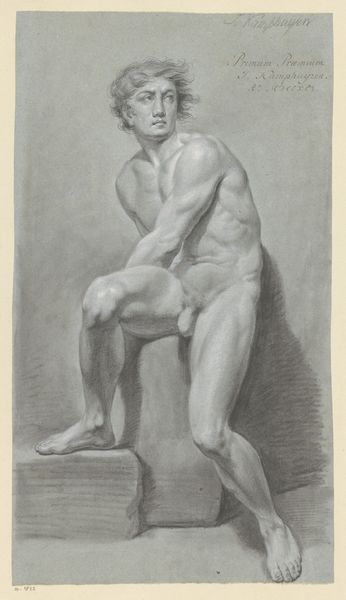
drawing, print
#
drawing
#
neoclacissism
# print
#
charcoal drawing
#
pencil drawing
#
history-painting
#
academic-art
#
nude
#
portrait art
Dimensions: height 541 mm, width 372 mm
Copyright: Rijks Museum: Open Domain
Curator: This is "Zittende naakte man met handen om zijn knie gevouwen," or "Seated Naked Man with Hands Clasped Around His Knee," an intriguing print by Louis Marin Bonnet, dating roughly from 1746 to 1793, now residing here at the Rijksmuseum. Editor: My immediate impression is one of intense introspection. The man's pose – almost fetal, but upright – suggests both vulnerability and a kind of contained strength. Curator: Precisely. This image fits squarely within the Neoclassical fascination with the ideal male form, drawing heavily on the history of classical statuary while still reflecting Bonnet’s contemporary context and interests. Such prints, usually done in sanguine, circulated widely as examples for other artists and students. Editor: That's fascinating. Seeing it now, removed from that specific pedagogical purpose, I am more drawn to its implications about masculinity and the gaze. His outward stare feels both assertive and somewhat detached, creating an interesting tension within the depiction of his exposed form. Curator: The creation of these academic artworks became vital to building not only public role models, but also the French and broader European identity at the time. It highlights how classical ideals shaped the contemporary self-understanding and legitimization of that social order. Editor: The material execution amplifies the feeling. The sepia tones feel delicate, and perhaps, consciously evoke historical drawings of a particular genre, which emphasizes that this artwork represents not just the man in front of us, but it encapsulates certain codes and languages around male beauty that continue to prevail today. Curator: You raise a critical point about its contemporary impact. The canonization of this body type—lean but muscular, contemplative—affects societal standards of beauty and perpetuates notions around normative body representation that might exclude other gender identities and bodies. Editor: Indeed. Engaging with artworks like this one requires unpacking the layers of historical context and also recognizing their echoes in present-day discourse about gender and identity. Thank you for bringing it into focus! Curator: It's in that act of continuous dialogue and contextualization that art fulfills its vital purpose— sparking insight and critical reflection across eras.
Comments
No comments
Be the first to comment and join the conversation on the ultimate creative platform.
